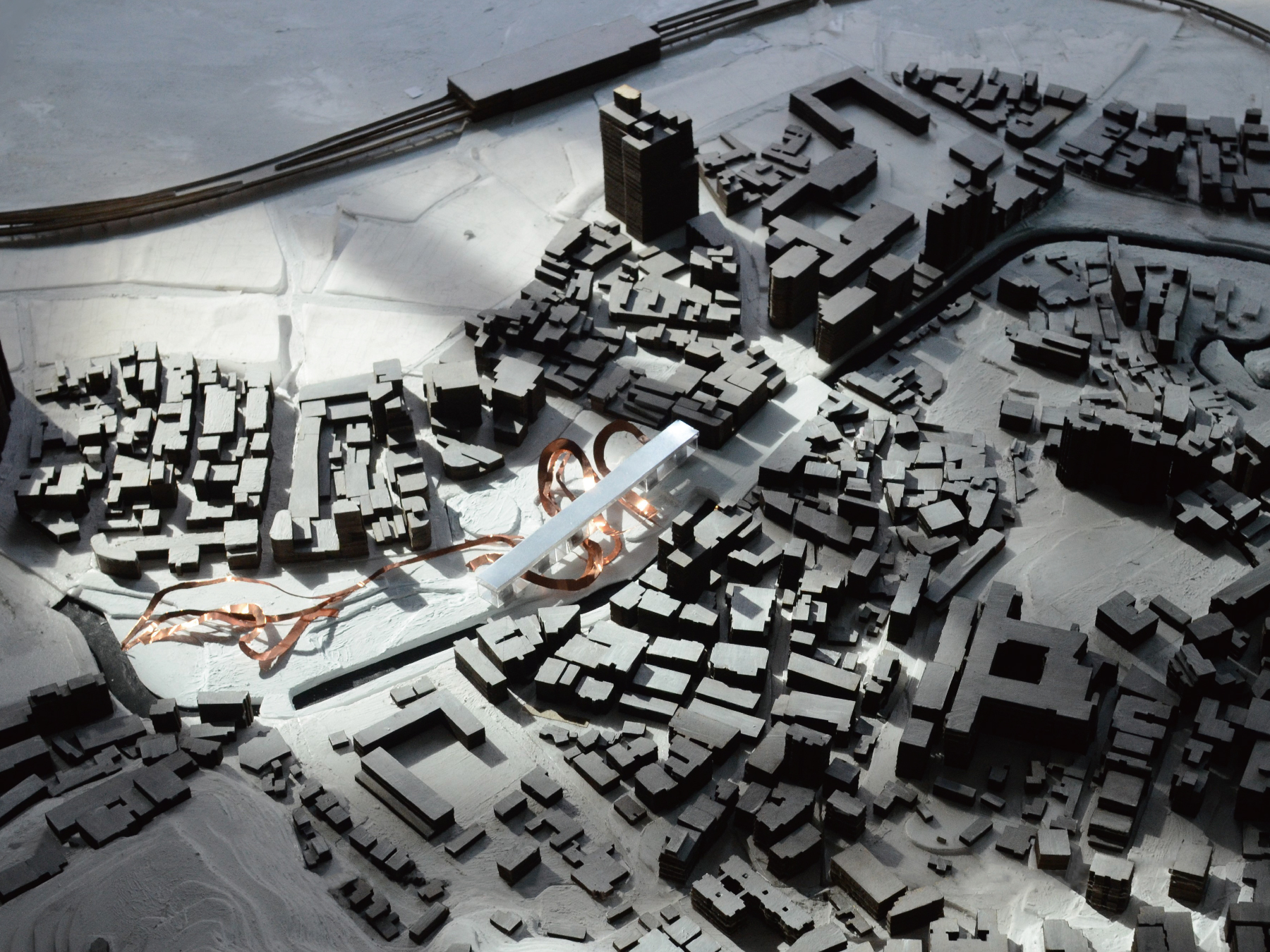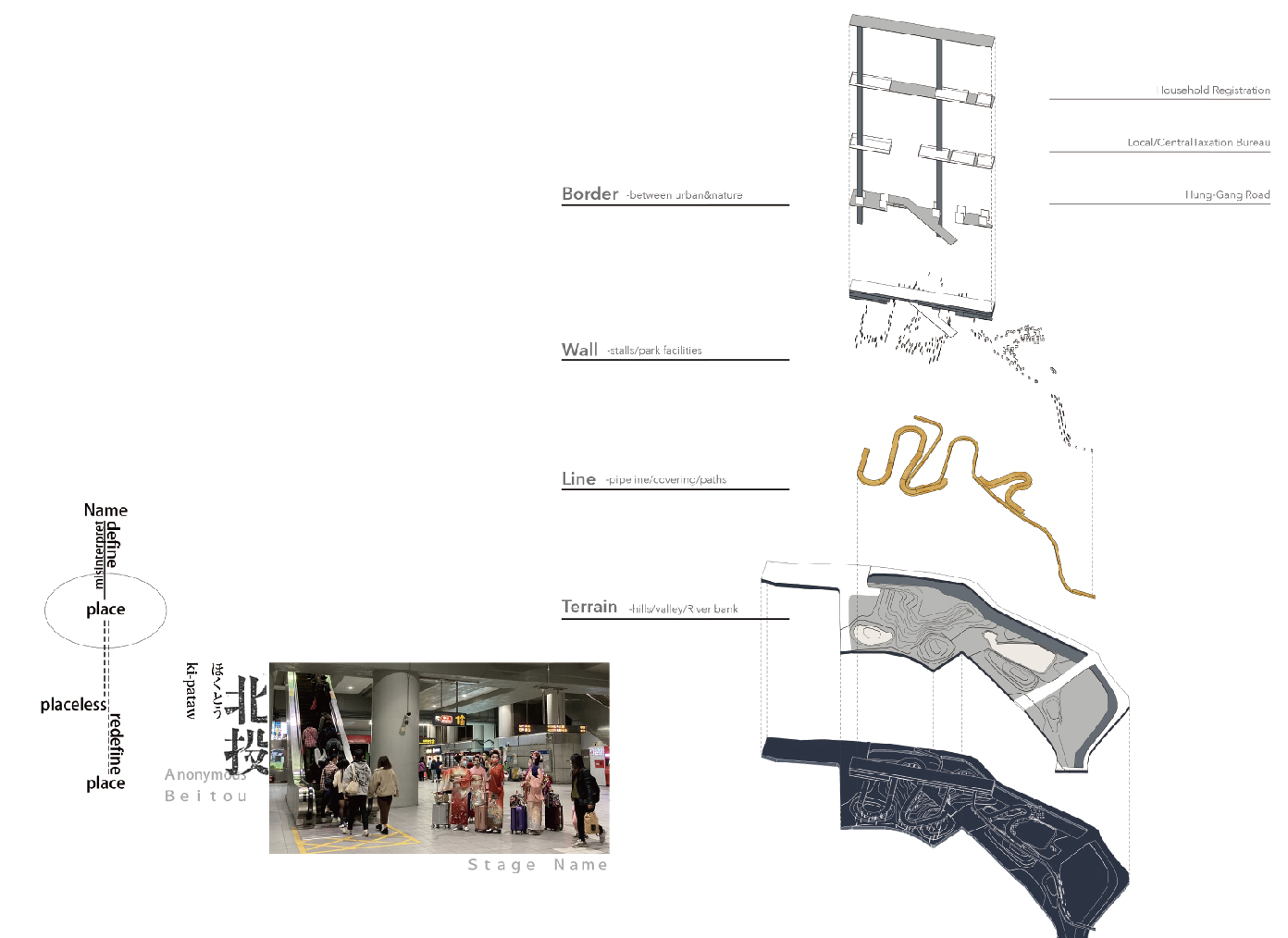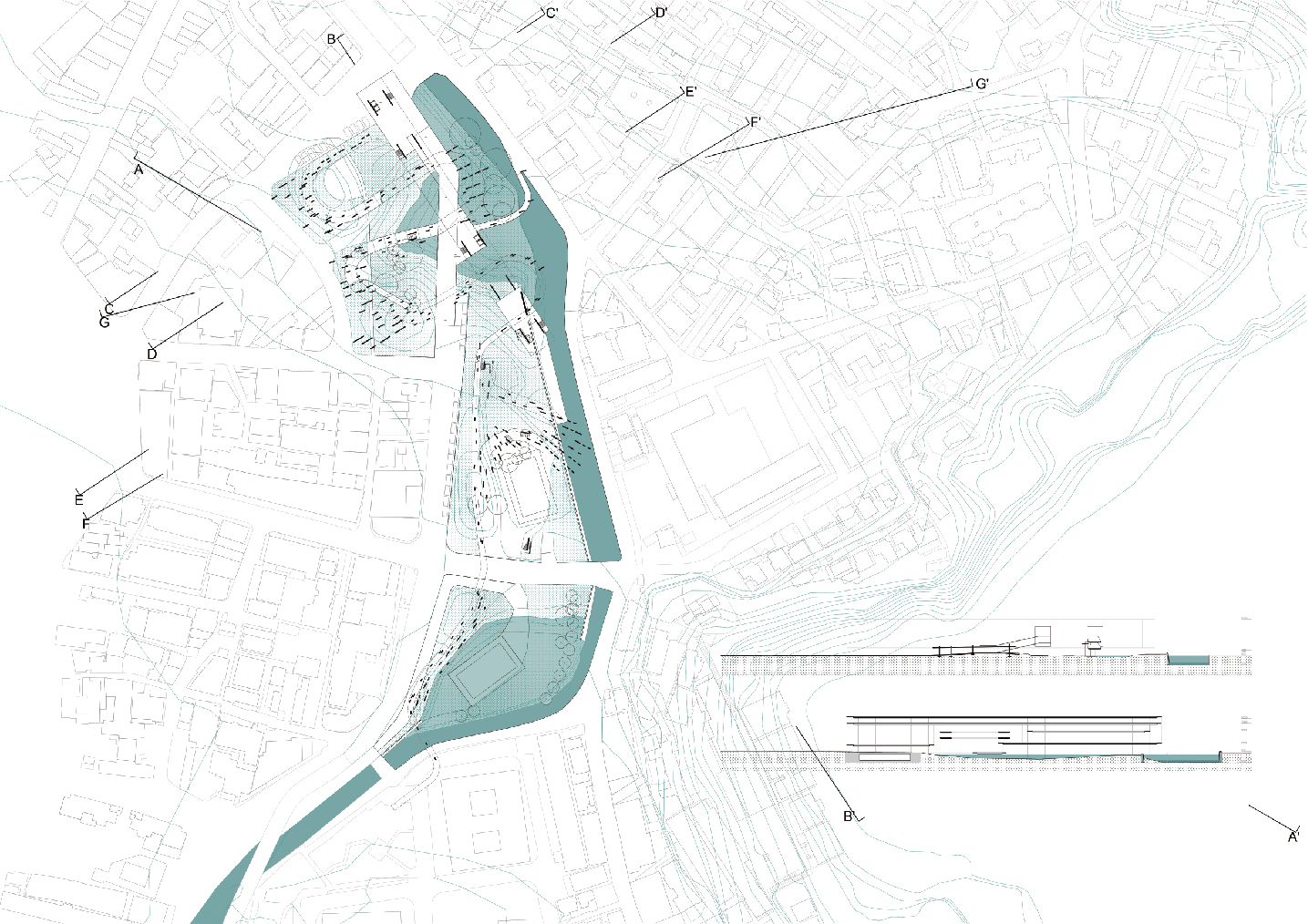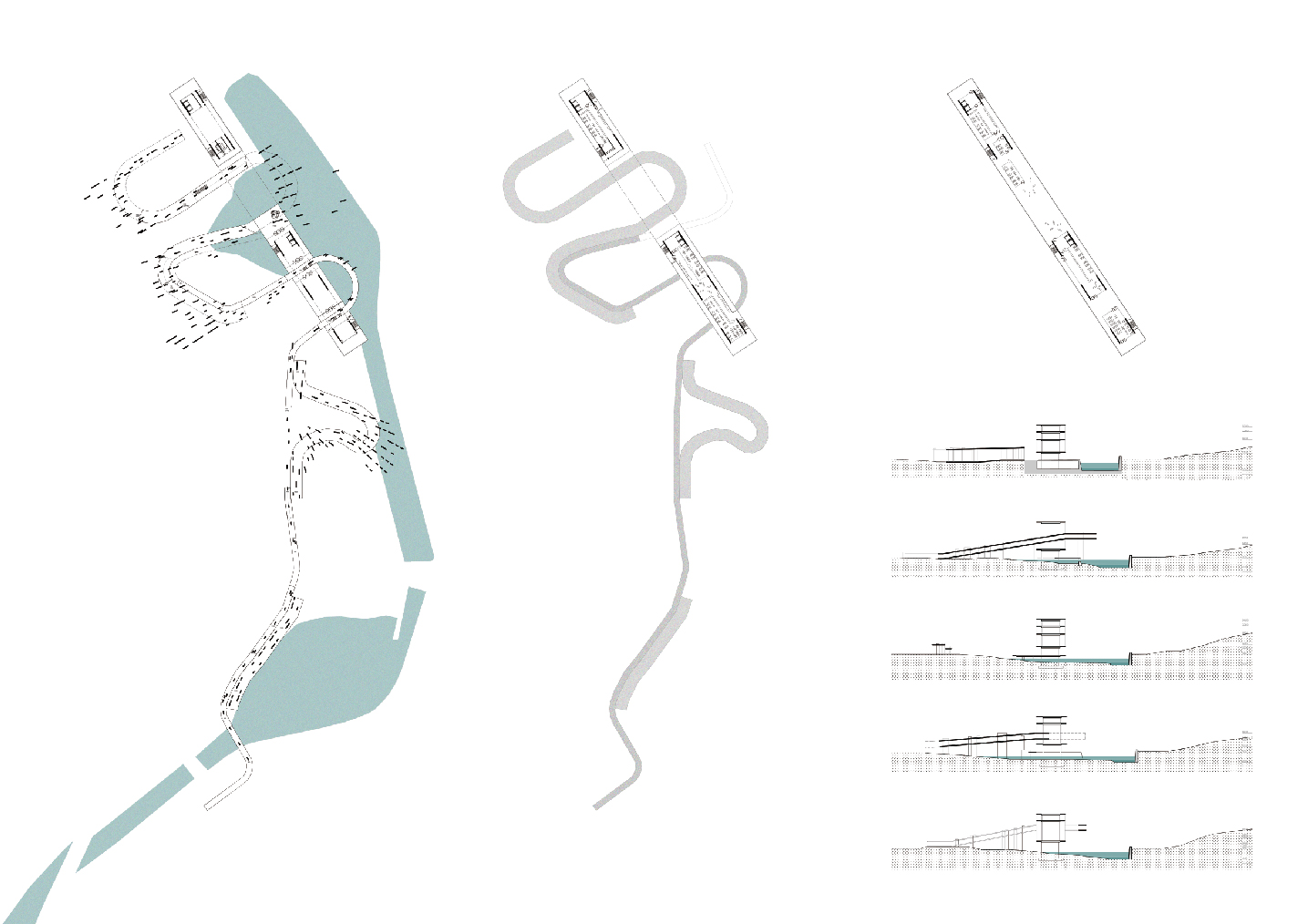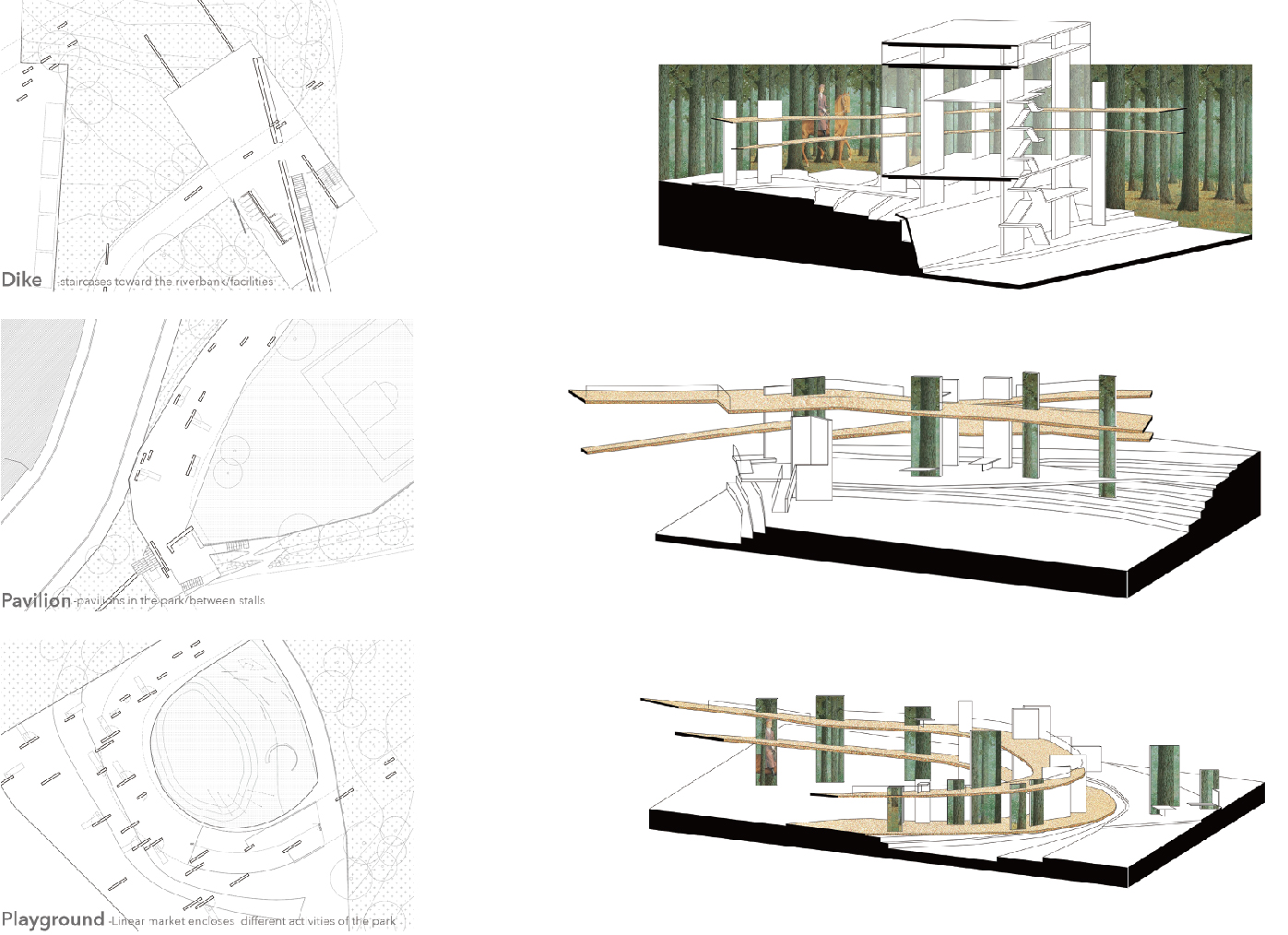北投的名字
北投是個活在名字裡的城市,但名字卻只涵蓋人們對溫泉鄉的美好想像,另一半的城市在人們的記憶裡竟是一片空白。
我認為在北投市場面臨新改建、磺港溪規劃開蓋的當下,市場周邊加蓋段上巨幅的公園用地應該被重新定義,策略上將市場拉成線型置於整片公園之中,以開放性的架構使空間在市場和公園之間切換角色。 和溫泉公園對應,市場公園的設計企圖為無以名狀的北投生活賦予她的名字。
設計分成主要的四個部分:量體(區域行政單位);曲折的屋頂廊道;板牆(也就是市場攤位營業的位置);銜接到磺港溪的起伏地景。
將市場和公園攪和在一起,重新組織地方的生活狀態。不僅企圖超越審美意義上的公園,更突破以往對公園休憩空間的詮釋,當市場的機能在公園上展開後,公園成為市民可「用」的空間。而傳統市場本身具備的社會關懷、社交活動也得以和公園中的休憩設施相得益彰。「市場-公園」著眼在那些被忽略的、失落的公共生活,試圖建立河川-公園地景-社會活動之間的交集,再定義地方。
The Name of Beitou
Beitou is a city that lives in its name, but her name only covers people’s fantasies as a hot spring village. The other half of the city is blank in people’s memory.
Now that the market buildings are facing reconstruction and the river is going to be uncovered, this huge urban public space should be redefined. Corresponding to the hot spring park, “Market-Park” aim to rename the indescribable anonymity of Beitou.
There are four main parts: the volume (regional administrative unit); the winding roof corridor; the wall (market stalls); and the landscape extending to Huang-gang River.
The two modes of opening and closing make the board wall switch roles between the booth and the park facilities. The interweaving of linear booths and markets allows the traditional market to retain its essence in the contemporary era (not the efficiency of buying and selling but the interpersonal interaction in public places). This market is no longer a centripetal and cohesive display. It is an active connection between the urban environment and the natural waterscape, and it is a hyper-expansion facing the external environment. The scattered slab walls can create many gaps, allowing the scenes of the market and the park to be read at the same time, while the activities of people also linger between the two.
Weave market and park together to reorganize place, and to rename the anonymous living area of the city.
This Park surpass the aesthetic perspective, and break through the previous interpretation of recreational spaces. When the function of the market is unfolded in the park, the park will become a space that can “be used” by the public. The social activities in the traditional market can complement the rest facilities in the park. Through this “Market-Park”, public life is reconstructed, the intersection between river, park landscape and social activities is established, and the place is redefined.
